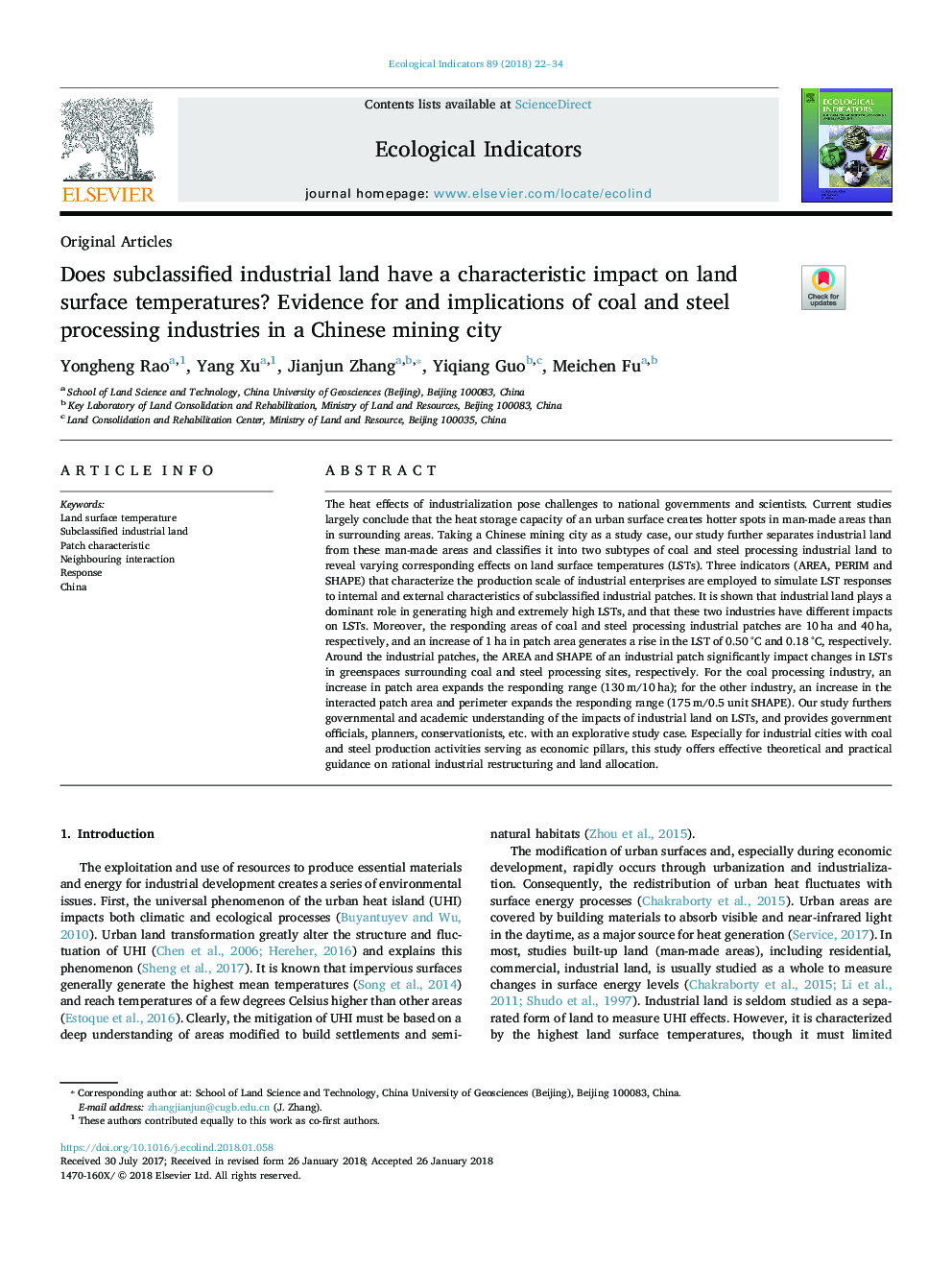| Article ID | Journal | Published Year | Pages | File Type |
|---|---|---|---|---|
| 8845428 | Ecological Indicators | 2018 | 13 Pages |
Abstract
The heat effects of industrialization pose challenges to national governments and scientists. Current studies largely conclude that the heat storage capacity of an urban surface creates hotter spots in man-made areas than in surrounding areas. Taking a Chinese mining city as a study case, our study further separates industrial land from these man-made areas and classifies it into two subtypes of coal and steel processing industrial land to reveal varying corresponding effects on land surface temperatures (LSTs). Three indicators (AREA, PERIM and SHAPE) that characterize the production scale of industrial enterprises are employed to simulate LST responses to internal and external characteristics of subclassified industrial patches. It is shown that industrial land plays a dominant role in generating high and extremely high LSTs, and that these two industries have different impacts on LSTs. Moreover, the responding areas of coal and steel processing industrial patches are 10â¯ha and 40â¯ha, respectively, and an increase of 1â¯ha in patch area generates a rise in the LST of 0.50â¯Â°C and 0.18â¯Â°C, respectively. Around the industrial patches, the AREA and SHAPE of an industrial patch significantly impact changes in LSTs in greenspaces surrounding coal and steel processing sites, respectively. For the coal processing industry, an increase in patch area expands the responding range (130â¯m/10â¯ha); for the other industry, an increase in the interacted patch area and perimeter expands the responding range (175â¯m/0.5 unit SHAPE). Our study furthers governmental and academic understanding of the impacts of industrial land on LSTs, and provides government officials, planners, conservationists, etc. with an explorative study case. Especially for industrial cities with coal and steel production activities serving as economic pillars, this study offers effective theoretical and practical guidance on rational industrial restructuring and land allocation.
Related Topics
Life Sciences
Agricultural and Biological Sciences
Ecology, Evolution, Behavior and Systematics
Authors
Yongheng Rao, Yang Xu, Jianjun Zhang, Yiqiang Guo, Meichen Fu,
